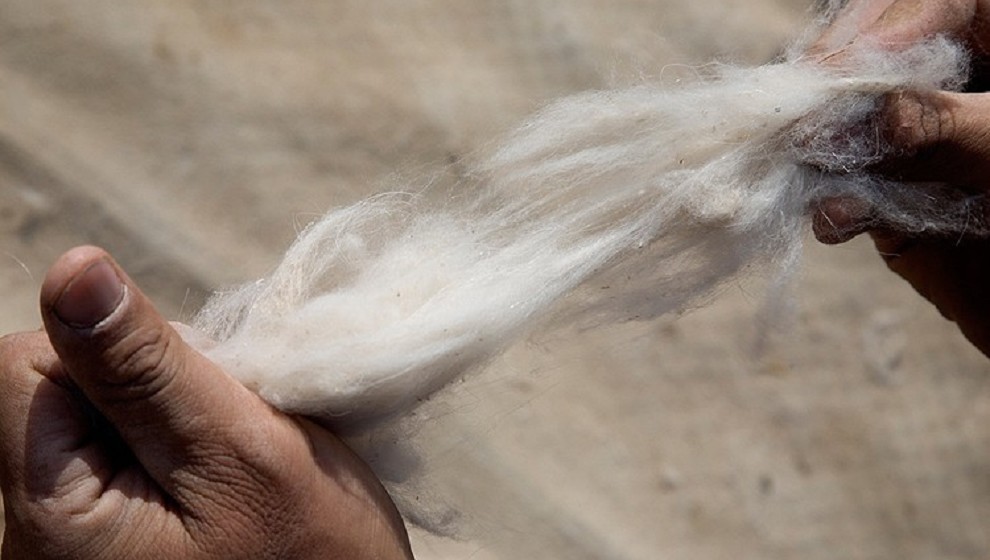Is Cashmere a Natural Fiber? Exploring Its Natural Origins and Uses
Is Cashmere a Natural Fiber? Exploring Its Natural Origins and Uses
Blog Article
Discovering the Various Kinds of Cashmere a Natural Fiber for Ultimate High-end
Cashmere, a natural fiber, is commonly related to high-end and convenience. Nevertheless, not all cashmere is developed equal. From the richly soft Mongolian selection to the lightweight warmth of Indian Pashmina, each kind offers its own one-of-a-kind functions and appeal. The more budget friendly Chinese cashmere, the conventional Scottish variation, and the premium Italian blend, all tell a various tale of this remarkable fiber. As we decipher the globe of cashmere, a much deeper understanding of its real worth and refinement starts to arise.
Comprehending the Lavish Nature of Cashmere
Cashmere, frequently associated with luxury and comfort, holds a special appeal worldwide of all-natural fibers. This soft, light-weight product is coveted for its outstanding heat and exceptional longevity. Unlike various other natural fibers, cashmere combines insulation with breathability, using unparalleled convenience throughout differing temperatures. Its glossy coating and soft structure add to its high-end appeal, justifying the costs price that often features cashmere garments. Additionally, cashmere's inherent crease resistance and flexibility improve its worth, making it a favored choice for premium apparel and devices. Despite its fragile look, cashmere has an unusual resilience, able to retain its form and lavish feeling gradually. This distinct blend of characteristics cements cashmere's placement as an icon of style and extravagance.
Just What Is Cashmere and Where Does It Come From?

Cashmere is acquired from the soft undercoat of cashmere goats, largely found in Mongolia, China, Iran, and Afghanistan. This careful procedure contributes to the shortage and high cost of cashmere. With its beginning in the severe landscapes of Asia, cashmere is a testimony to nature's ability to create deluxe from hardship.
Translating the Various Kinds Of Cashmere
Recognizing the different kinds of cashmere is crucial to appreciating the quality and unique features of this lavish material. Generally, cashmere is categorized right into three kinds: raw, virgin, and reused. Decoding these kinds is the first action in comprehending the exclusivity and value of cashmere.

The One-of-a-kind Characteristics of Each Sort Of Cashmere
Having actually discovered the various categories of cashmere, it becomes obvious that each type boasts its distinct set of characteristics. Mongolian cashmere, for circumstances, is renowned for its remarkable top quality, as a result of Mongolia's rough winters months that generate longer and finer fibers. Alternatively, Chinese cashmere is frequently a lot more budget friendly, though its much shorter fibers can lower longevity. Scottish cashmere is commemorated for its elegant gentleness, a result of the conventional water washing procedure making use of Scotland's soft water. Italian cashmere, at the same time, is renowned for its skillful mixing and Continue coloring techniques, providing it versatile and lively. Indian cashmere, additionally recognized as Pashmina, is cherished for its amazing lightness and heat. Each type, hence, adds to the textile's online reputation for high-end.
Why Cashmere Is the Epitome of High-end in Fashion
Cashmere holds a prestigious setting in the globe of fashion, related to as an icon of deluxe and refinement (is cashmere a natural fiber). Cashmere is acquired from the great undercoat of Himalayan goats, recognized for their remarkable high quality fiber. Cashmere's unmatched convenience and longevity make it a desired product in the production of high-end garments.
The Refine of Making Cashmere: From Goat to Garment
The trip of cashmere, from being an undercoat of a Himalayan goat to a lavish garment, is a detailed one. With the development of spring, farmers in Mongolia and China collect the woollen by brushing the goats, making sure no damage is done. The acquired wool is composed of coarse outer hair and soft downy undercoat. This mix is after that meticulously separated, with just the soft down utilized for cashmere. This raw cashmere is washed, dyed and spun right into thread. The yarn is after that woven or weaved right into textiles. The final step entails pushing and cleaning to give the material its characteristic soft qualities and heat. From goat to garment, each step is a testimony to the patience, virtuosity and skill entailed in crafting cashmere.

Final Thought
To conclude, cashmere, with its natural beauty and exceptional comfort, rules supreme worldwide of high-end fashion. The diversity in types, varying from the soft Mongolian, lightweight Indian Pashmina, cost effective Chinese, standard Scottish, to the colorful Italian, discloses the convenience of this all-natural fiber. The scrupulous process of changing it from a goat to their website a garment additionally includes in its exclusivity, making cashmere the embodiment of class and luxury.
Cashmere, a natural fiber, is frequently linked with high-end and convenience (is cashmere a natural fiber).Cashmere, usually linked with high-end and convenience, holds a special allure in the world of all-natural fibers. Unlike other all-natural fibers, cashmere combines insulation with breathability, using unequaled comfort across differing temperature levels. Cashmere is derived from the soft undercoat of cashmere goats, largely discovered in Mongolia, China, Iran, and Afghanistan. Cashmere is acquired from read the fine undercoat of Himalayan goats, recognized for their superior top quality fiber
Report this page